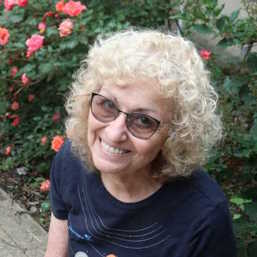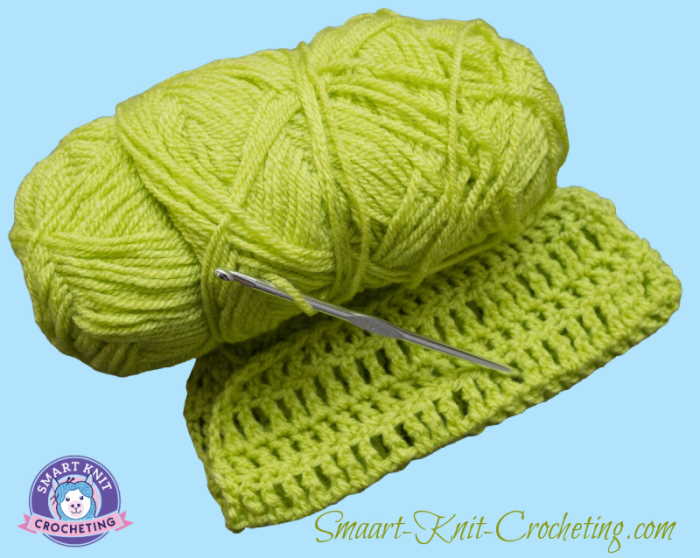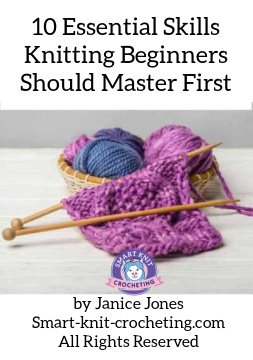- Home
- How to Crochet
- Tapestry Crochet
Tapestry Crochet: A Beginner's Guide to Creating Colorful Designs
by Janice Jones
If you ever wanted to try some crochet colorwork but were a bit intimidated by Fair Isle or Intarsia, then Tapestry Crochet might be just the thing for you. I don’t think I’m going out on a limb to suggest that crocheters love color—lots of Color.
Tapestry crochet, also known as woven yarn method or crochet tapestry, is a technique that involves working with multiple colors of yarn simultaneously to create intricate, multi-colored patterns.
Unlike typical color-changing methods where yarn strands are cut and joined, crochet tapestry involves carrying the inactive colors along the rows or rounds and working over them.
This results in a dense fabric with a beautiful, detailed design on one side and less visible color changes on the other.
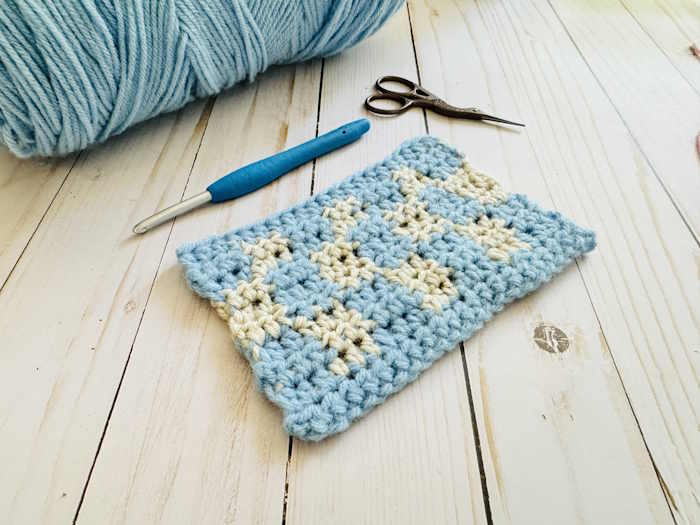
What is Tapestry Crochet?
Tapestry crochet is a technique that involves working with multiple colors of yarn in a single row or round.
Unlike traditional crochet, where you complete each stitch before moving on to the next, tapestry crochet carries the unused colors along as you work, creating a woven-like effect. This technique allows you to create intricate designs, patterns, pictures, and even letters and words for your crochet projects.
To begin working tapestry crochet, you'll need to know the basic crochet stitches, such as single crochet, double crochet, and treble crochet.
Getting started with tapestry crochet might seem daunting, but with some practice, even beginners can master it! Here's a step-by-step guide to help you get started:
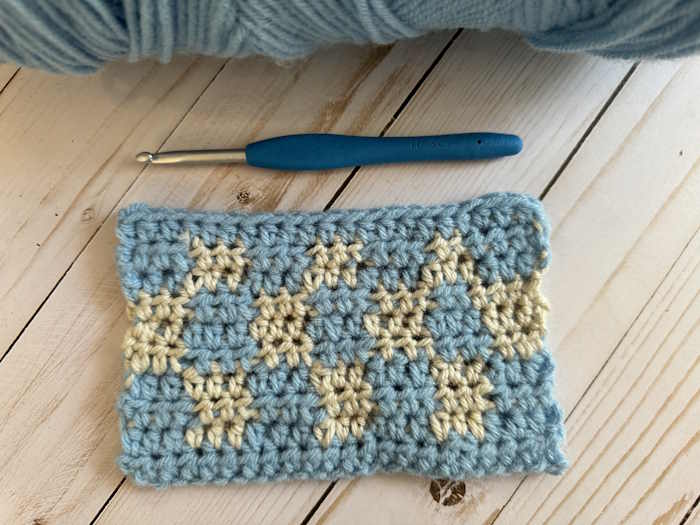
Materials Needed
Yarn in different colors (same weight and fiber type)
Crochet hook appropriate for the yarn weight
Scissors
Tapestry needle (optional for weaving in ends)
How to Work Tapestry Crochet
- Choose Your Pattern: Select a simple tapestry crochet pattern, preferably with a chart. Patterns or charts will guide you on when and where to change colors or use one of my charts below.
- Working The Foundation Row: Start with a foundation chain using your primary color. The number of chains will depend on your specific pattern.
- Follow the chart to know when to change colors. Do not cut the yarn, but instead, place the old color on top of the stitches from the previous row. Work the current stitches on top of the colored yarn you are not using. When you need to switch back to the primary color, drop the second color and pick up the primary color from where you left off.
- Continue working your stitches, carrying the unused color along the top of your work and switching colors as needed to create your desired design.
Changing Colors in Crochet
Here is a quick tutorial in case this is the first time you have had to change colors or yarn in crochet.
The method for changing colors is the same regardless of the type of stitches you are using: single, crochet, half double, double, or treble crochet stitches.
- Crochet across or around until you reach the place where you need to change colors.
- When you reach a point in your pattern where you need to switch colors, do so in the last step of the crochet stitch before the color change. For the single and double crochet stitches, that means you should have two loops on the hook. For the half double crochet stitch, there will be three loops on the hook.
- Lay the new color over the hook (no need to make any knots).
- Pull the new color through to finish the stitch. Tighten both the old and new color yarns slightly.
- Lay the old color yarn on top of the stitches you are about to work into. (This carries the old color along without the need to cut the yarn.)
- Start the new color in the normal way.
Tapestry Crochet Practice Swatch
Here is an easy way to practice Tapestry Crochet
You will need:
- Two colors of yarn (both the same weight and fiber
- A crochet hook that corresponds to the yarn you choose
- Scissors
- Tapestry needle for weaving in ends.
For this swatch, I chose two contrasting colors of worsted weight (CKC #4) Red Heart Supersaver acrylic yarn
- US Hook Size H (5.0 mm)
- Scissors
- Tapestry Needle
Half Double Crochet Stitch Tapestry Crochet Swatch
Cast on 21 stitches (multiples of 3)
Row 1: Hdc in each chain across. Ch 2 and turn.
Row 2 - 4: *Hdc in each stitch using the primary color, change to secondary color, and work 3 hdc in the next 3 stitches. Repeat from * across: Ch 2 and turn.
Row 5 – 7: Hdc in each stitch using secondary color, change to primary color and work 3 hdc in the next 3 sts, repeat from * across: Ch 2 and turn.
Repeat rows 2 to 7 for the practice swatch.
Half Double Crochet Stitch Tapestry Crochet Swatch Chart
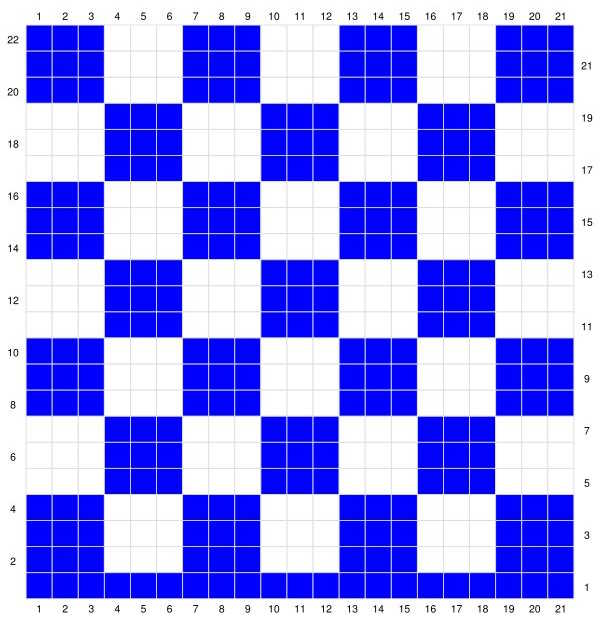
Tapestry crochet is often worked from a color chart because it is easier to visualize the fabric's appearance when finished.
We start to crochet at the lower right hand corner where you see the number 1.
Each square represents one stitch represented by a color.
Tips for Successful Tapestry Crochet
- Keep your tension consistent throughout your work to ensure even stitches and a neat appearance.
- Use a tapestry needle to weave in your ends securely, as this will prevent your work from unraveling.
- Keep unused colors loose enough to avoid puckering but tight enough to prevent gaps in your work.
- Practice with simple designs and fewer colors before moving to more complex patterns.
History of Tapestry Crochet
Tapestry crochet has existed for centuries, with early examples dating back to the 19th century. The technique is believed to have originated in South America, where indigenous people used it to create colorful bags, hats, and other accessories.
As the craft spread to other parts of the world, it evolved and adapted to different styles and preferences.
In the 1970s, the modern crochet world saw a resurgence in interest in tapestry crochet, particularly in the United States.
Inspired by traditional techniques, contemporary crafters began experimenting with tapestry crochet in new and exciting ways, incorporating it into various projects from home décor to fashion accessories.
Conclusion
Tapestry crochet is a fun and creative way to add color and interest to your projects. By following these basic steps and tips, you'll be on your way to creating beautiful crochet tapestries in no time. As you gain confidence in your skills, you can explore more advanced patterns and designs, letting your imagination run wild with the possibilities of tapestry crochet.
